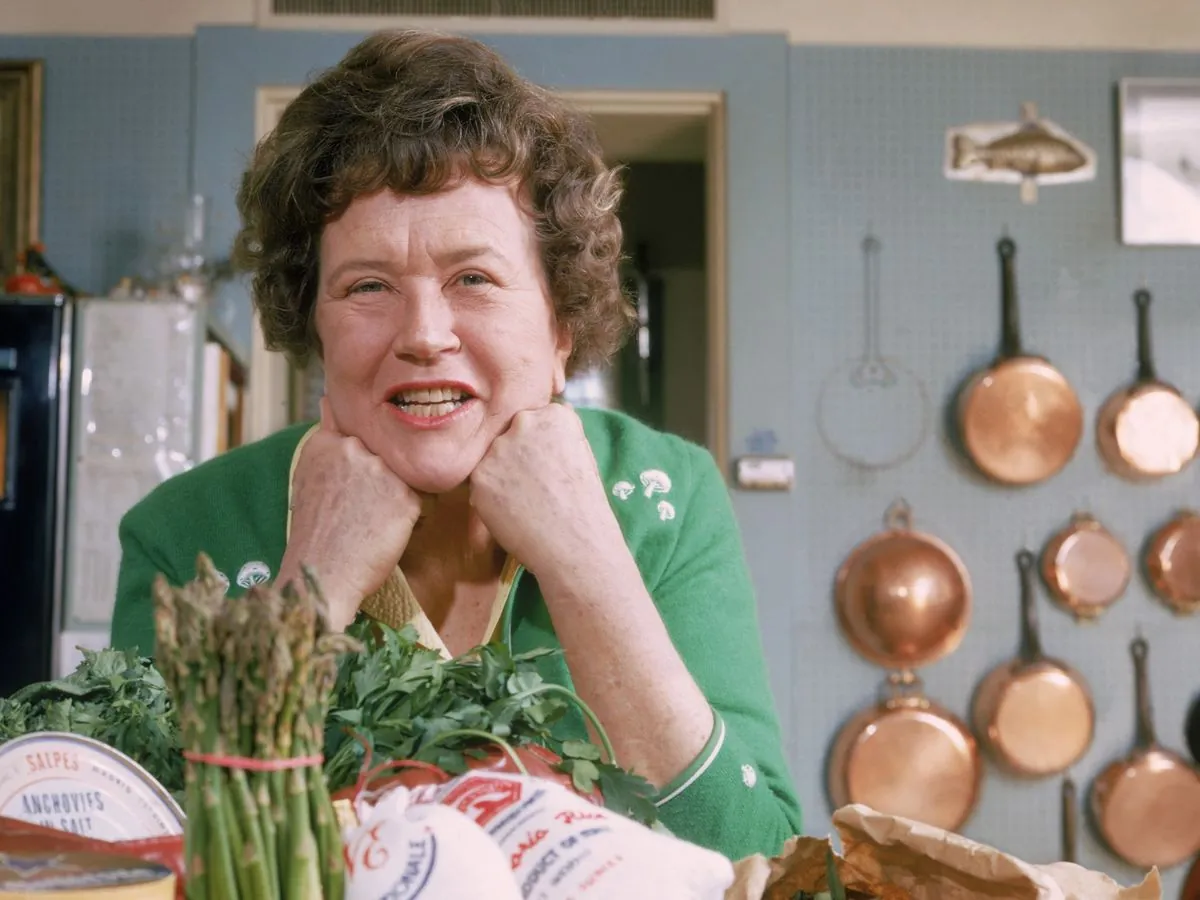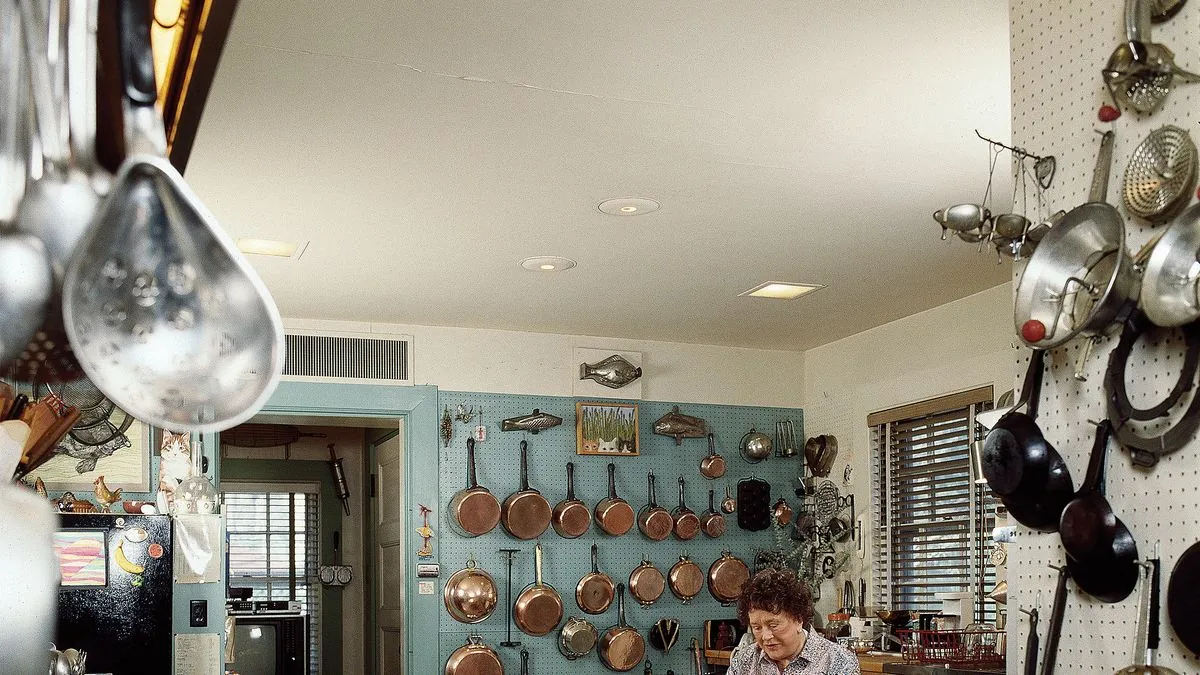Julia Child's Kitchen: A Legacy of Culinary Innovation and Comfort
Julia Child's Cambridge kitchen, now at the Smithsonian, showcases her approach to cooking and entertaining. The space reflects her mission to make cooking accessible and enjoyable for all.

Julia Child's Cambridge kitchen, a culinary landmark for decades, served as the epicenter of her cooking empire. This space, where she developed recipes and filmed three of her iconic cooking shows, embodied her lifelong mission to make cooking accessible and enjoyable for everyone.
Julia Child, born on August 15, 1912, in Pasadena, California, became a culinary icon through her innovative approach to cooking and teaching. Her first cookbook, "Mastering the Art of French Cooking," published in 1961, coincided with her move to the Cambridge home where she would create her famous kitchen. This timing marked the beginning of her rise to culinary stardom, which would include becoming the first woman inducted into the Culinary Institute of America's Hall of Fame in 1993.
When Julia and her husband Paul designed their kitchen in 1961, they prioritized functionality and comfort. Paula J. Johnson, curator of food history at the Smithsonian National Museum of American History, explains, "They wanted to really make sure that it reflected the way she cooked, the way they lived. It is a serious working space, obviously, but it's deceptive because it feels so homey."
The kitchen's design incorporated several key elements that reflected Julia's cooking philosophy:
- Entertaining space: A dining table in the center of the kitchen encouraged guests to gather and participate in the cooking process.
- Work zones: The layout was organized around the sink, the famous Garland range, and the refrigerator, with tools grouped accordingly.
- Visible storage: Pegboards displayed cookware and utensils, making them easily accessible and visually appealing.

Julia's approach to kitchen organization was both practical and aesthetic. She believed in keeping tools visible, stating, "I have always been a hanger-upper, since I like to see where everything is." This philosophy resulted in the iconic pegboard system, where Paul outlined the shapes of each item to ensure easy return to its designated spot.
The kitchen's design also accommodated Julia's impressive 6 feet 2 inches (1.88 m) stature. Her famous Garland range and kitchen sink were custom-built to be higher than standard, allowing her to work comfortably.
In 2001, Julia agreed to donate her kitchen to the Smithsonian. The museum meticulously documented and transported over 1,200 tools and objects, reassembling the entire room exactly as it was in Cambridge. Since its opening in 2002, millions of visitors have experienced this piece of culinary history.
Julia Child's kitchen remains a testament to her enduring impact on American cooking culture. From her debut on "The French Chef" in 1963 to receiving the Presidential Medal of Freedom in 2003, her influence extended far beyond her Cambridge kitchen. Her legacy continues to inspire home cooks and professional chefs alike, reminding us that the kitchen can be a place of joy, creativity, and connection.
"I want the dining table in the middle of the room just because, like a sheepdog, I need to be right there in the midst of everyone."
This quote perfectly encapsulates Julia's approach to cooking and entertaining, emphasizing the social aspect of food preparation and enjoyment. Her kitchen, now preserved at the Smithsonian, stands as a tribute to a woman who revolutionized American cooking and made the culinary arts accessible to all.


































